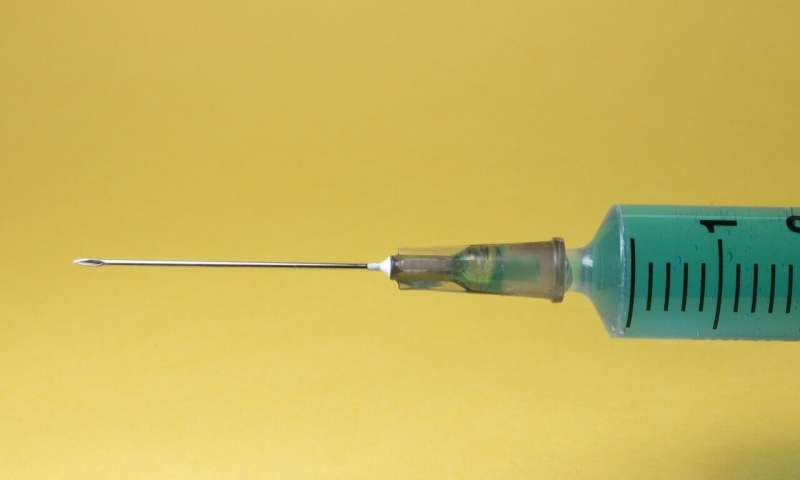Credit: CC0 Public Domain
Vaccines are one of the most successful public health measures of all time, saving millions of lives every year. But how are they made?
Vaccines are amazing. They help your body develop immunity against dangerous and deadly diseases without being exposed to them.
The first vaccine was for protection against smallpox. In 1796, British doctor Edward Jenner used cowpox to develop immunity against smallpox.
In fact, this pioneering discovery is how the field of vaccinology got its name. "Vacca' means 'cow' in Latin.
How are vaccines made?
Vaccines work by imitating infection without causing illness.
One of the simplest ways to create a vaccine is to take the entire pathogen and damage it. Weakening a pathogen so it grows poorly is called attenuation.
Attenuated vaccines introduce a weaker form of the virus or bacteria into the body. Examples include measles, mumps and rubella vaccines.
These pathogens are too weak to make you sick, but your immune system still learns to recognise it to fight it in the future.
The immune response attenuated vaccines generate is strong and can last for years. For some vaccines, immunity can fade over time, and you may need a booster. Boosters bump up your immunity and make sure your body remains ready to fight infection.
Another way to make a vaccine is to take part of the pathogen as a vaccine target.
When you are infected with a pathogen, your immune system sees it in small pieces instead of as a whole. These small pieces are called antigens.
Not all antigens stimulate a helpful immune response, so researchers need to choose carefully. They might select one or a few of these antigens to create a new vaccine.
The Vaccine Pipeline. Credit: The University of Queensland
Other important elements of vaccines are preservatives and adjuvants.
Preservatives prevent vaccines from becoming contaminated with harmful bacteria or fungi. Adjuvants boost the immune response to produce more antibodies and longer-lasting immunity.
This makes the vaccine more effective and protection last longer.
Testing, testing, 1, 2, 3
Once a new vaccine has been made, it's tested rigorously before it's available to the public. This testing often involves trials in animals.
The first round of human tests have very small participant numbers and focus on safety.
If it passes this test, more trials using larger numbers of people occur. This is where researchers can see how effective the vaccine is in preventing infection, and they can keep an eye out for side effects.
If the vaccine is safe and effective, then there are regulatory hurdles to clear. In Australia, all new vaccines must be reviewed and approved by the Therapeutic Goods Administration.
From start to finish, the process of making a vaccine can take up to 10 years or more.
What if we can't wait?
Can we fast-track a vaccine? Emerging infectious diseases like the SARS-CoV-2 coronavirus need a rapid response.
Around the world, networks of brilliant scientists have been developing cutting-edge approaches to vaccine design. These are advanced through rapid response vaccine pipelines.
With vaccines in development at the CSIRO and the University of Queensland, Australian scientists look set to be a crucial part of the solution.
Provided by Particle
This article first appeared on Particle, a science news website based at Scitech, Perth, Australia. Read the original article.























